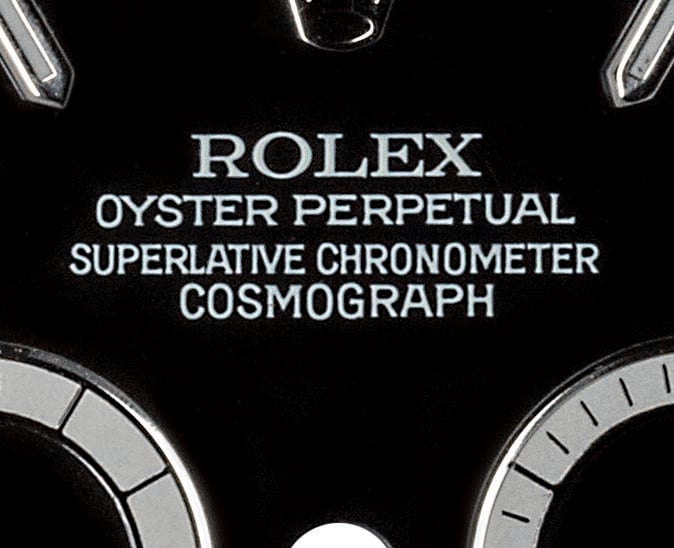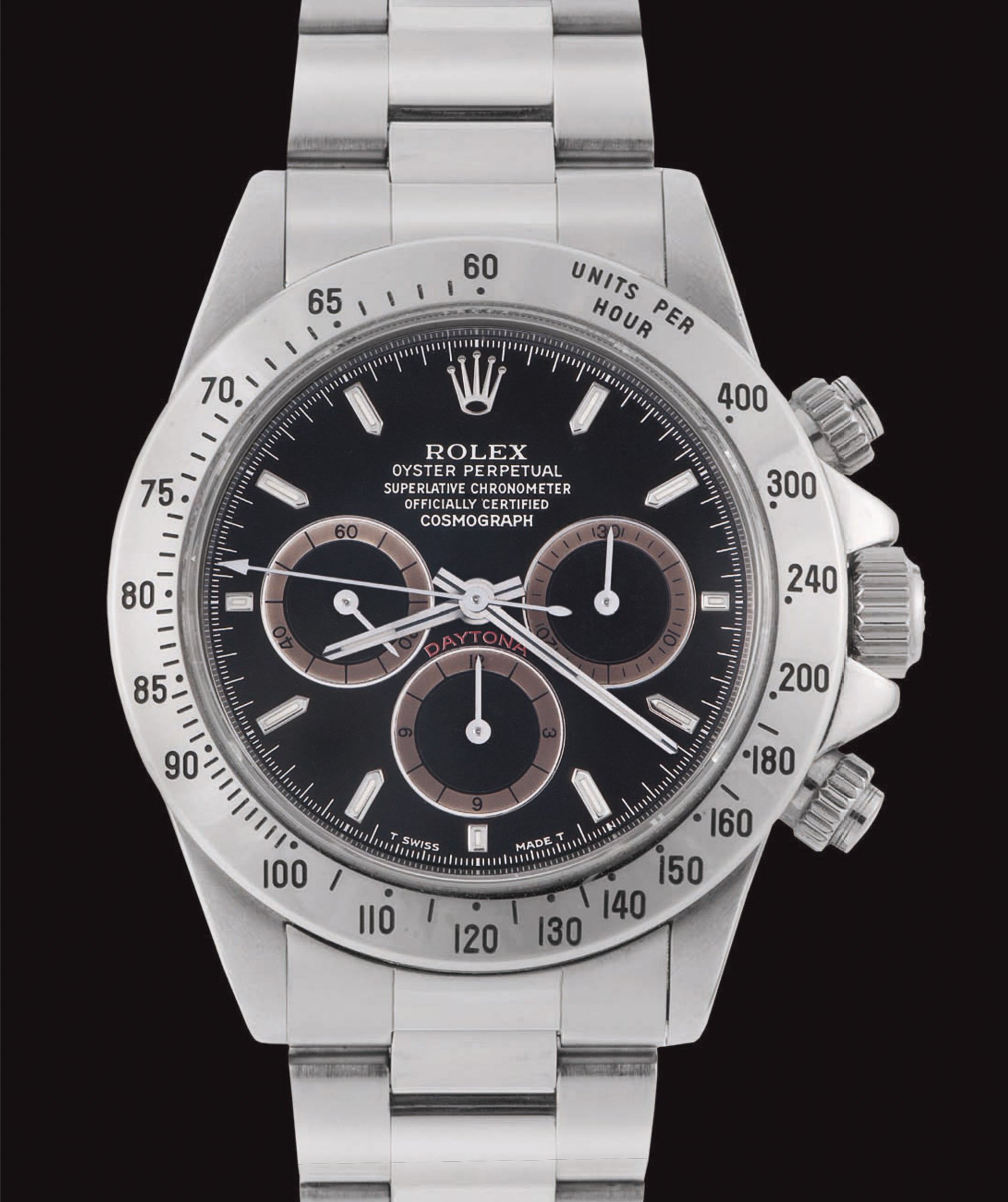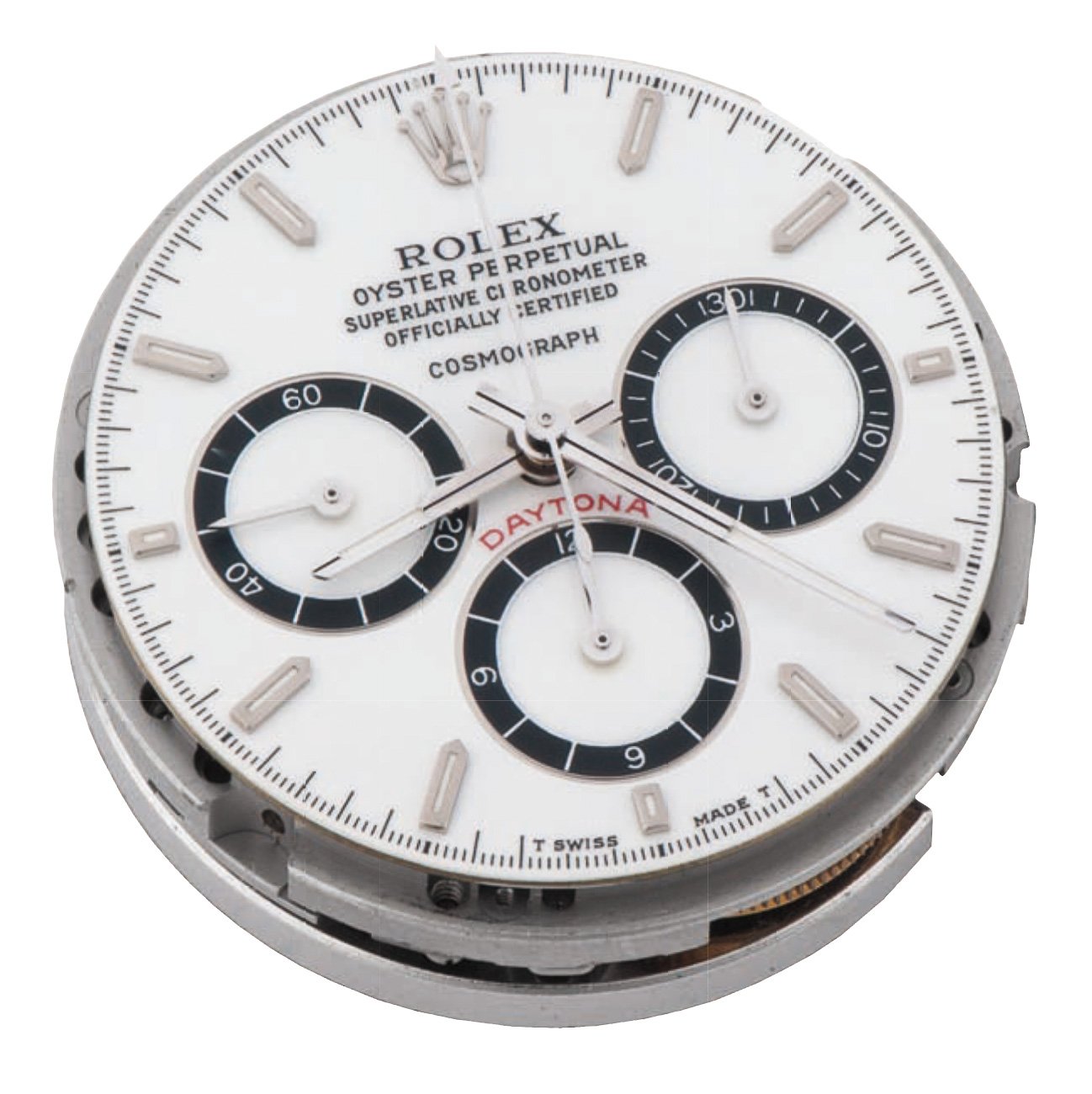Giorgia Mondani on the Rolex Daytona reference 16520
I am excited and honored to write my first article for Fratello Magazine. I have been thinking a lot about the first topic to talk about and, in the end, I decided to write about the iconic Rolex Daytona ref. 16520.
Because from my point of view, this model really stands-out in the history of Rolex and represents one of the timepieces whose value increased more over the years. In 1988, after the discontinued production of the manual winding Cosmograph, Rolex launched the first references of the self-winding chronograph with sapphire crystal on the market: 16520 for the stainless steel model, 16523 for the steel and gold model, and 16528 for the gold model.
Rolex 16520-Mark 1 to 8
The main characteristics of the ref. 16520 are waterproof screw-down buttons, a Triplock winding crown, water-resistance to 100 meters, a self-winding movement, and a sapphire crystal. The reference 16520 represents the first self-winding Oyster chronograph with a sapphire crystal in the history of Rolex. It is powered by the caliber 4030.
A steel bezel is engraved with a “units per hour” scale. The first models had a scale graduated up to 200 units per hour. This changed after about a year to 400 units per hour with the intermediate calibration of 225. Since 1989/1990 the bezel has been graduated to 400 units per hour, but with an intermediate interval of 40 units between 200 and 240. The watch market and collectors worldwide have become very fastidious when it comes to identifying small differences between the various watches. In light of that, let’s take a look at several dial variations for the ref. 16520.
With the support of the latest Mondani Book “Self-Winding Rolex Daytona”, let’s go through all different iterations of this reference, or ‘Mark’-series:
MARK 1
It is nicknamed “floating dial” and it features a 5-line dial. The fifth (floating) line is further away from the others (floating. The typeface has accentuated serifs, an inverted 6, and tritium lume. This graphic design sports a unique feature. The two “Os” in CHRONOMETER differ from each other — the first one is narrower and the second one is wider. A very rare version of the Mk I dial with a glossy background is referred to as the “porcelain dial”. The word DAYTONA is not red like on the Mk I, but a lighter shade more like coral.
Until about 1994 the number 6 was inverted (9) – from serial S to serial W-
MARK 2
A 4-line dial, with an inverted 6, baton-style writing (without or almost without serifs), and tritium luminous material.
MARK 3
A 5-line dial, with an inverted 6, a typeface with very expressive serifs, and tritium lume. The characteristic “downward” serifs of the letters “L” and “E” in the word ROLEX can only be found in this Mk and in the graphics of the previous Mk I and Mk II.
MARK 3 Variant 1
The upper writing is identical to the previous iteration. The only difference is in the word “DAYTONA,” which is printed without serifs.
MARK 4
A 5-line dial, with an inverted 6, and baton-style writing. The word DAYTONA has no serifs, the letters “C” and “O” in SUPERLATIVE CHRONOMETER OFFICIALLY CERTIFIED COSMOGRAPH are rounder than on the Mk III. This dial uses tritium. The mark 4 has 3 more variants.
MARK 5
A 5-line dial, with a regular 6, baton-style writing (including the word DAYTONA), increased spacing between OYSTER and PERPETUAL. The typeface of the three sub-registers has changed.
MARK 6
Mark 6 is the last dial with tritium. Its typeface is identical to the previous Mark, but all 5 lines are in a different position (placed higher up on the dial).
MARK 7
Similar to the previous dial (the five lines of text remain in their lofty position), but it only bears the words SWISS MADE due to the use of luminova (the “T’s” for tritium have disappeared). The spacing between OYSTER and PERPETUAL is reduced, the words DAYTONA and SWISS MADE are narrower. Graphics are in baton style.
MARK 8
Identical to the previous Mark, but with increased spacing between OYSTER and PERPETUAL; the words DAYTONA and SWISS MADE are wider spaced also.
The Patrizzi Dial
The “Patrizzi dial” deserves particular attention because it is one of the rarest and most expensive variations. A Patrizzi dial is a Rolex Daytona Reference 16520 with a dial that features counters that have oxidized and turned brown. The name “Patrizzi” comes from the fact that Osvaldo, together with my dad, was the first to notice this color-change process.
The change of color, which is aesthetically pleasing and creates a fascinating patina effect. It is due to the fact that Rolex has always used organic varnishes for its dials. When these dials were not sufficiently protected by a transparent layer of “zapon,” the silver contained in these varnishes oxidized. This happens because of a reaction with the sulfur in the air). The price for a Patrizzi Dial today is around €35,000-€40,000 if both the box and papers are present. But please be careful, the internet today is full of fake Patrizzi dials: Dials that have been cooked in the oven or aged by some other artificial means.
The Porcelain Dial
The most expensive variation of the ref. 16520 is the “Porcelain dial” with five lines of text: These watches are extremely rare and can achieve a price of €120,000-€140,000 if complete with box and papers.
In general, the Rolex Daytona ref. 16520 represents the perfect example of a watch which also is a good investment, but you need to have clear and correct information before buying or selling. If you need to know more about it (and more Daytonas), please have a look at our new Book “Self-Winding Rolex Daytona”. You can follow me on Instagram for more Rolex content.






























